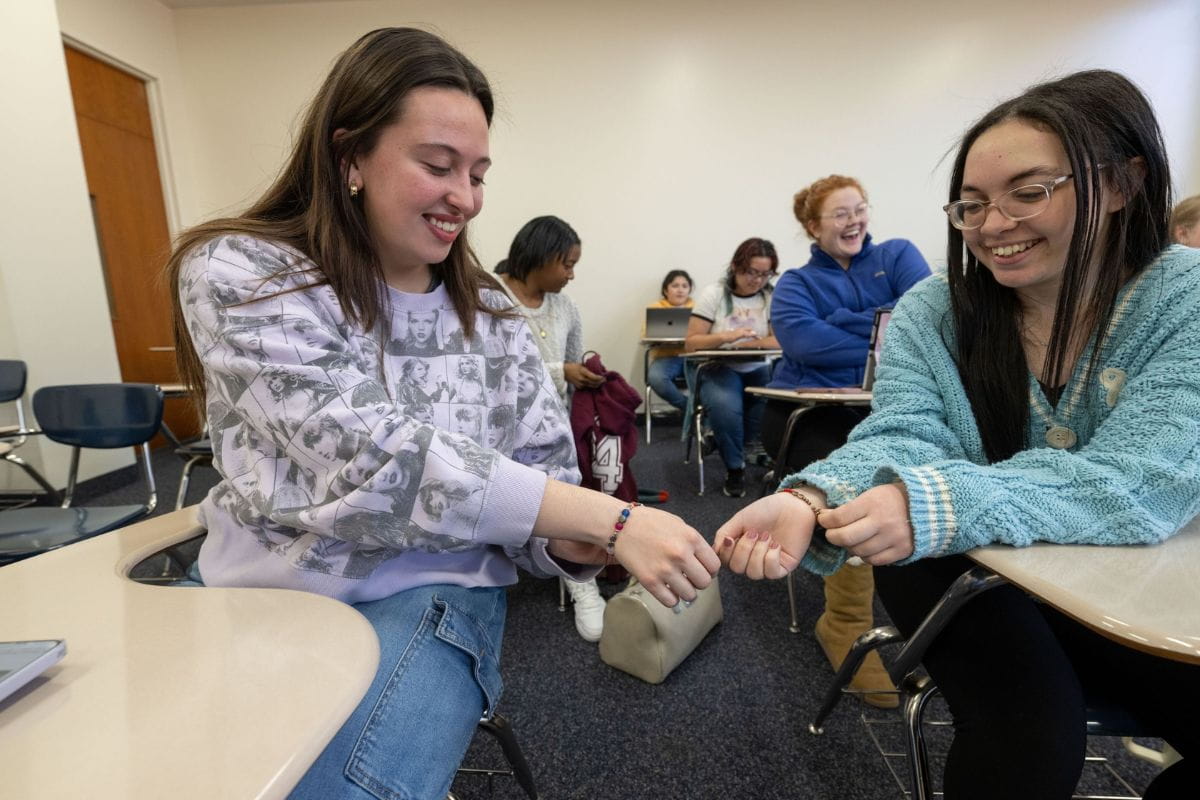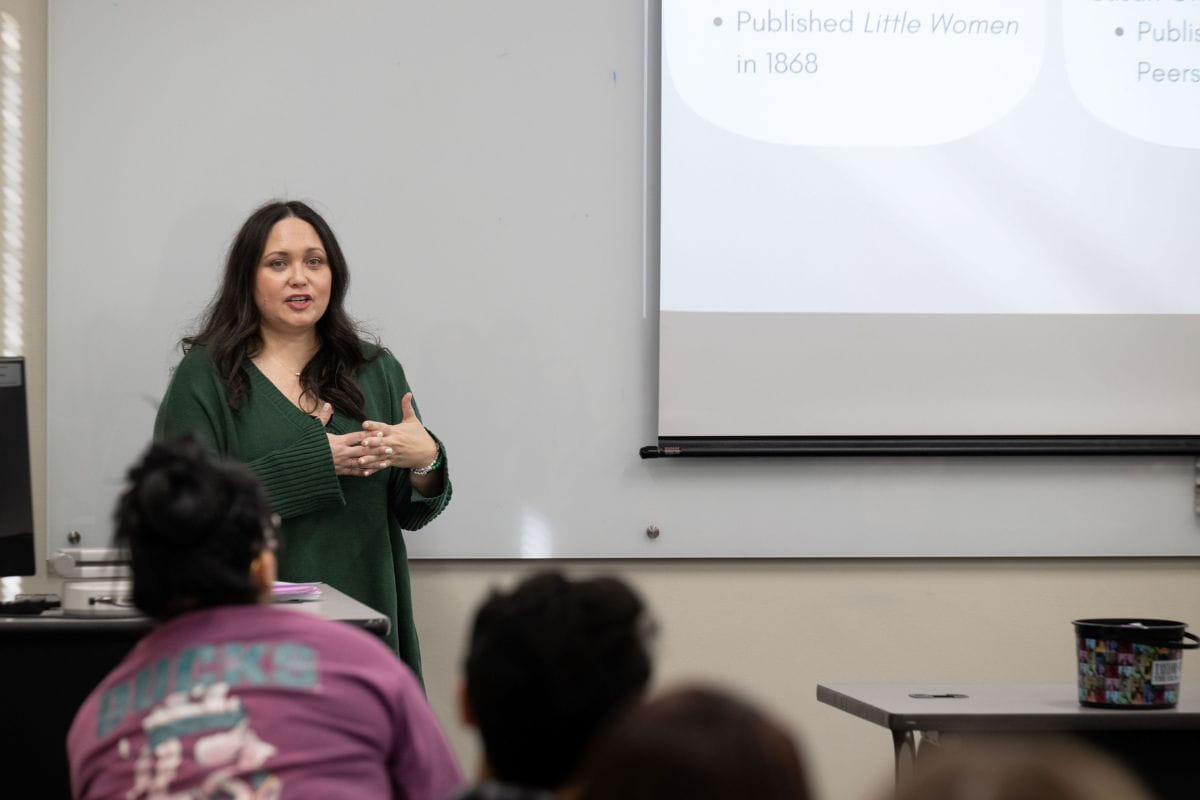A tour of literary eras through Taylor Swift lyrics

From “Fearless” to “Folklore,” the songs of musical icon Taylor Swift are providing a lens for an English lecturer at The University of Texas at Arlington to guide her students through different eras of literature.
Lecturer Rachael Mariboho said the course, “Women in Literature and Art (Taylor’s Version),” combines her passion for pop culture and teaching literature. Students in the course connect Swift’s lyrics to a selection of women’s literature, art and films by spotting references to other works and analyzing thematic similarities. The study culminates in an opportunity for students to curate their own artistic era, illuminating themes in Swift’s writing that resonate with them.
Like other literature courses in the UTA Department of English, it offers practice in communication, literary analysis, critical thinking, empathy and understanding different perspectives on issues. While searching for Easter eggs and deeper meaning in Swift’s lyrics, students are also strengthening marketable skills that apply to a wide range of careers, Mariboho said.
She originally developed the idea as part of poster presentation for the Maverick Advantage Faculty Engagement Program’s faculty showcase. When Kathryn Warren, director of undergraduate studies, saw Mariboho’s poster, she knew the UTA English Department should turn Mariboho’s “Wildest Dreams” into a reality.
The English Department previously offered a course called “The Life and Times of S. Carter,” which approached Jay Z as a major figure in ethnic literature. Students used text-mining software to quantify linguistic and thematic trends found in Jay Z's albums and classic literary texts by Black writers.
 Lecturer Rachael Mariboho
Lecturer Rachael MaribohoMariboho hopes her course shows students that the songbook of a beloved artist is a valuable topic of study alongside classic literature.
“I think it is really important that students see that what you love—whatever it is—matters,” Mariboho said. “It’s worth studying; it’s worth talking about; it’s worth connecting to other literature we read because it is culturally relevant today.”
Something that stood out to Mariboho about Swift, particularly in recent years, is her emphasis on claiming ownership of her work. Swift’s desire and successful quest to be credited for her writing is the same desire that many female authors pursued and were denied throughout history. This link connecting female writers of different generations contributed to Mariboho’s decision to focus on women’s writing throughout the course.
“When we look at Swift’s writing, there are references to Shakespeare, to Fitzgerald, to the Romantic poets,” Mariboho said. “There are so many literary references that we could use, but I really wanted to give myself the framework of women’s writing. We’re going to read heavier things this semester because when you talk about women’s literature and women’s art, there is heavy stuff to read, but more than anything, we are going to lean into the joy that Taylor brings. And that is something I hope students get out of the course.”
- Written by Ellie Mahan – Marketing, Messaging, and Engagement